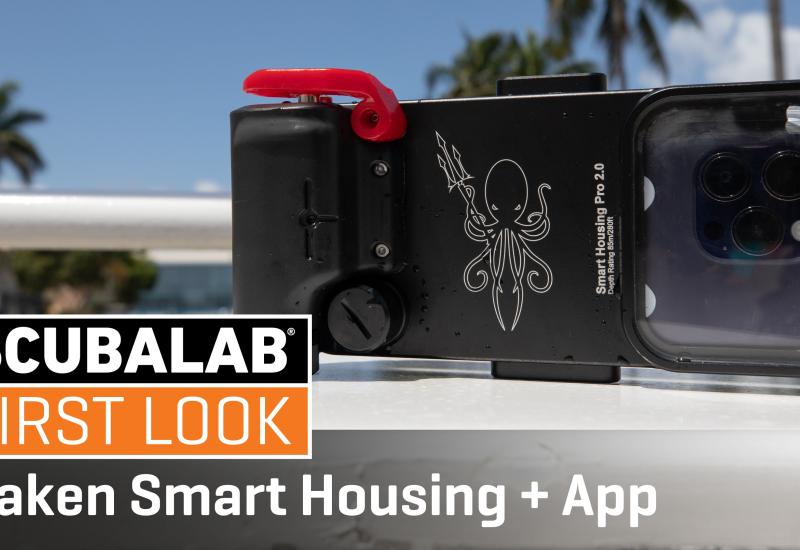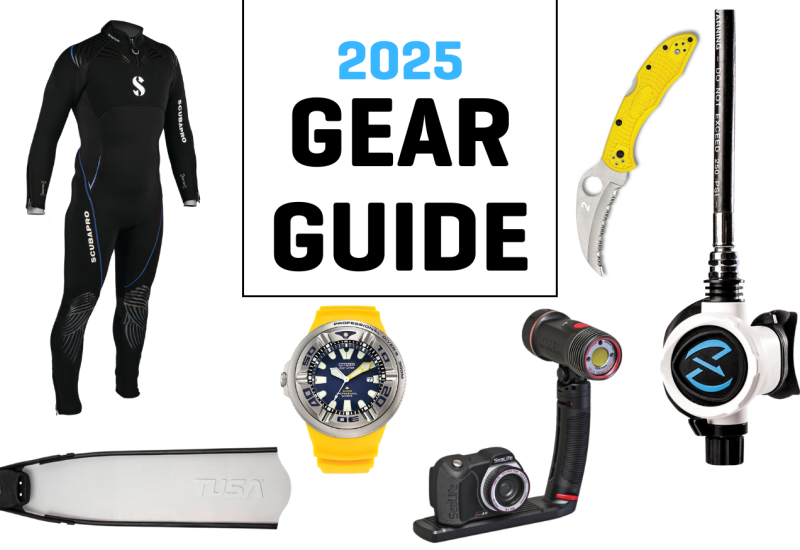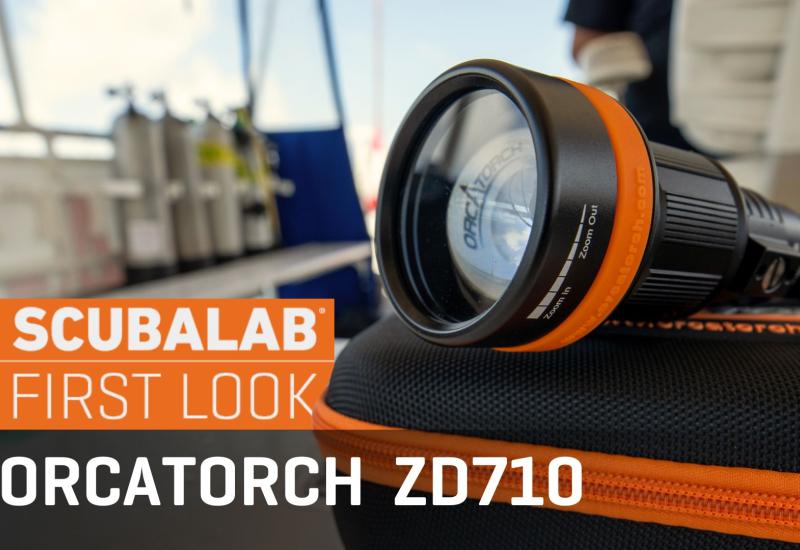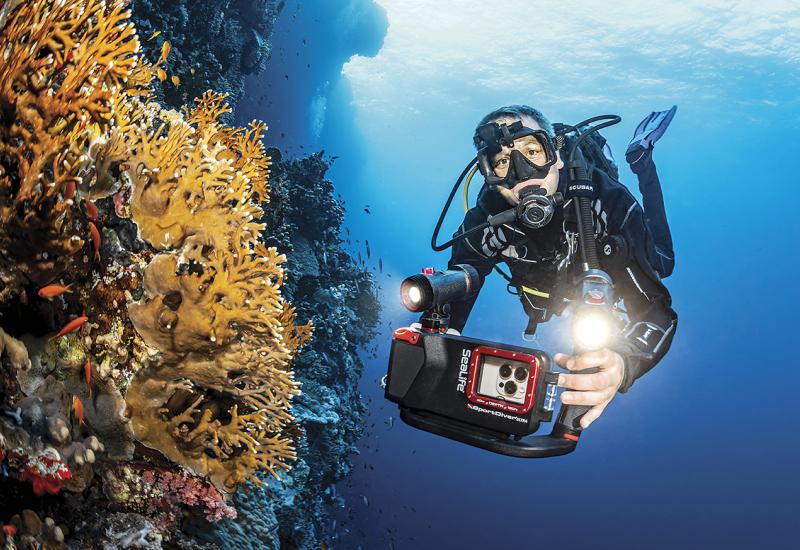ScubaLab Blog #3: The Testing Begins
Blog #3: The Testing Begins
The team of test divers we chose for this project is made up of an amazing group of people. Several of them regularly drive from as far away as Portland to volunteer their time at the Oregon Coast Aquarium, and they were kind enough to do the same for our ScubaLab drysuit tests.
The Test Team
This dedicated group of testers all boast outstanding credentials and experience. The team included Master Divers Jeff Fischer and Barbara Johnson, who each hold 12 years of dive experience. On a personal note, the couple received their Rescue certification at one of the operations I used to run in Palm Beach, Florida. Also onboard were AAUS Scientific Divers John Estabrook (5 years experience), Hilaire Bojonell (26 years experience), Galen Gard (34 years experience) as well as Jim and Chris Pendergass (40 years experience). The final members included Bruce Hansen, DSO of the US Forestry Service (40 years experience); Ian Chun, Aquarium Staffer (9 years experience); USCG Petty Officer Carlos Hessler (15 years experience); PADI Dive Master Dave Cutter (45 years experience); and PADI Instructor Diana Hollingshead (20 years experience).
We were extremely lucky to have Diana helping with the tests, as she and her husband, Mike, own Eugene Skin Divers Supply, a 55-year-old family business in Oregon that represents every drysuit manufacturer we tested, granting her an across-the-board product knowledge that was a very welcome asset to our testing. Moreover, 10 years ago Diana wrote the PADI Habitat Diver Specialty course, which is still used today to train aquarium divers. Add in Val’s 25 years of experience and my own 30, and by my calculations, we had 353 years combined experience. You’d be hard pressed to find a more qualified group of testers.
The Testing Process
For our testing headquarters, we commandeered the Special Event room, which boasts spectacular outside views of the nearby inlet and estuary, along with inside views of the aquarium’s Open Sea Habitat. In spite of the attractive scenery, the group’s attention was nearly completely focused on the incredible drysuit technology we had on-hand from brands like Apollo, Bare, Body Glove, DUI, Pinnacle, Scubapro, Seasoft, Waterproof and Whites. For serious divers like us, having access to all of this brand-new gear was like 353 years of birthdays and Christmas mornings all rolled into one.
Once the suits were sized and assigned to the appropriate team members, we began gearing up in buddy teams. Val maintains a strict buddy-team approach with her divers with safety always at the forefront. For me, that mostly meant watching where I put my feet along the slippery walkways between the habitats. It would, after all, be highly embarrassing — not to mention quite cold — for the Director of ScubaLab to join his test-team members in the water while wearing street clothes. I mostly played Tender by noting buddy-team air supply and times as they entered and exited the water, while Val collected and collated their data sheets.
A note on test results: Although we can’t give you the full results of our drysuit tests in this blog (you’ll have to wait for Scuba Diving’s May issue to find out how each suit scored in each category) the following paragraph does provide you with a general idea of our test procedures. In this blog, we put the “gist” in logistics.
The Testing Procedures
Each team member was assigned multiple drysuits and given an underwater slate and waterproof paper to take notes. A series of different test exercises were performed at the surface, on the surface and at depth to determine fit, range of motion, ease of donning and doffing as well as use and positioning of valves — in short, tests of the overall comfort and ergonomics of the suits. We also keyed in on safety features, for example, testing whether or not the automatic deflation valves could keep up with manual inflation. We almost took for granted that the engineering of these valves would be consistent among the handful of valve makers (spoiler alert: it pretty much was), and instead we mainly concentrated on fit, form and function. After all, these are the three main factors divers look for when selecting a drysuit, with price being a close fourth.
Well, that’s about all I can divulge about the testing for now. Like I mentioned earlier, you’ll have to wait for the May issue of Scuba Diving to read the complete test results. But after reading this blog, you’ll at least have a good idea of how we arrived at our final scores.
To read the full, detailed results of the 2011 ScubaLab Drysuit Tests, check out the May 2011 issue of Scuba Diving. The May issue is shipped to subscribers on April 12 and hits newsstands on April 26.

Cindy Hanson
Blog #3: The Testing Begins
The team of test divers we chose for this project is made up of an amazing group of people. Several of them regularly drive from as far away as Portland to volunteer their time at the Oregon Coast Aquarium, and they were kind enough to do the same for our ScubaLab drysuit tests.

Cindy Hanson
The Test Team
This dedicated group of testers all boast outstanding credentials and experience. The team included Master Divers Jeff Fischer and Barbara Johnson, who each hold 12 years of dive experience. On a personal note, the couple received their Rescue certification at one of the operations I used to run in Palm Beach, Florida. Also onboard were AAUS Scientific Divers John Estabrook (5 years experience), Hilaire Bojonell (26 years experience), Galen Gard (34 years experience) as well as Jim and Chris Pendergass (40 years experience). The final members included Bruce Hansen, DSO of the US Forestry Service (40 years experience); Ian Chun, Aquarium Staffer (9 years experience); USCG Petty Officer Carlos Hessler (15 years experience); PADI Dive Master Dave Cutter (45 years experience); and PADI Instructor Diana Hollingshead (20 years experience).
We were extremely lucky to have Diana helping with the tests, as she and her husband, Mike, own Eugene Skin Divers Supply, a 55-year-old family business in Oregon that represents every drysuit manufacturer we tested, granting her an across-the-board product knowledge that was a very welcome asset to our testing. Moreover, 10 years ago Diana wrote the PADI Habitat Diver Specialty course, which is still used today to train aquarium divers. Add in Val’s 25 years of experience and my own 30, and by my calculations, we had 353 years combined experience. You’d be hard pressed to find a more qualified group of testers.

Cindy Hanson
The Testing Process
For our testing headquarters, we commandeered the Special Event room, which boasts spectacular outside views of the nearby inlet and estuary, along with inside views of the aquarium’s Open Sea Habitat. In spite of the attractive scenery, the group’s attention was nearly completely focused on the incredible drysuit technology we had on-hand from brands like Apollo, Bare, Body Glove, DUI, Pinnacle, Scubapro, Seasoft, Waterproof and Whites. For serious divers like us, having access to all of this brand-new gear was like 353 years of birthdays and Christmas mornings all rolled into one.
Once the suits were sized and assigned to the appropriate team members, we began gearing up in buddy teams. Val maintains a strict buddy-team approach with her divers with safety always at the forefront. For me, that mostly meant watching where I put my feet along the slippery walkways between the habitats. It would, after all, be highly embarrassing — not to mention quite cold — for the Director of ScubaLab to join his test-team members in the water while wearing street clothes. I mostly played Tender by noting buddy-team air supply and times as they entered and exited the water, while Val collected and collated their data sheets.

Cindy Hanson
A note on test results: Although we can’t give you the full results of our drysuit tests in this blog (you’ll have to wait for Scuba Diving’s May issue to find out how each suit scored in each category) the following paragraph does provide you with a general idea of our test procedures. In this blog, we put the “gist” in logistics.
The Testing Procedures
Each team member was assigned multiple drysuits and given an underwater slate and waterproof paper to take notes. A series of different test exercises were performed at the surface, on the surface and at depth to determine fit, range of motion, ease of donning and doffing as well as use and positioning of valves — in short, tests of the overall comfort and ergonomics of the suits. We also keyed in on safety features, for example, testing whether or not the automatic deflation valves could keep up with manual inflation. We almost took for granted that the engineering of these valves would be consistent among the handful of valve makers (spoiler alert: it pretty much was), and instead we mainly concentrated on fit, form and function. After all, these are the three main factors divers look for when selecting a drysuit, with price being a close fourth.
Well, that’s about all I can divulge about the testing for now. Like I mentioned earlier, you’ll have to wait for the May issue of Scuba Diving to read the complete test results. But after reading this blog, you’ll at least have a good idea of how we arrived at our final scores.
To read the full, detailed results of the 2011 ScubaLab Drysuit Tests, check out the May 2011 issue of Scuba Diving. The May issue is shipped to subscribers on April 12 and hits newsstands on April 26.










